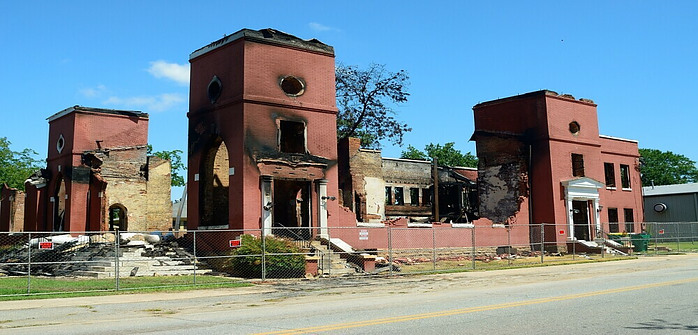Identifying and Assessing Property Risks: A Comprehensive Guide
 Understanding the Basics of Property Risk Management
Understanding the Basics of Property Risk Management
Property investment is a significant financial undertaking, and managing property risks is essential to protect your investment and ensure its long-term success. In this blog post, we will delve into the world of property risk management, covering everything from understanding the various categories of property risks to identifying, assessing, and effectively mitigating them.
Defining Property Risk and Its Significance in Real Estate Investments
Property risk refers to any potential threat or hazard that could adversely affect the value, safety, or profitability of a property. Whether you are a homeowner, landlord, or real estate investor, recognizing the significance of property risk management is crucial to safeguard your investment. Neglecting property risks can lead to financial losses, legal issues, and safety concerns.
Categories of Property Risks: Physical, Legal, Financial, and Environmental
To effectively manage property risks, it’s essential to categorize them into four main groups:
1. Physical Risks: These encompass structural issues, maintenance challenges, and natural disasters that can cause damage to the property.
2. Legal Risks: Legal risks include potential disputes, zoning violations, property title issues, and liability concerns.
3. Financial Risks: These risks pertain to fluctuations in the real estate market, interest rates, and economic conditions that can impact property value and cash flow.
4. Environmental Risks: Environmental risks involve factors like pollution, climate change, and natural disasters that may affect property resilience and sustainability.
Identifying Property Risks: A Strategic Approach
Identifying property risks is the first step in managing them effectively. Here’s a strategic approach to identify and assess property risks comprehensively:
Conducting Thorough Property Inspections: What to Look For
When inspecting a property, pay attention to structural integrity, the condition of roofing, plumbing, electrical systems, and potential hazards like mold or asbestos. Document any necessary repairs or maintenance.
Assessing Neighborhood and Local Area Risks
Evaluate the safety, crime rates, proximity to essential services, and the quality of schools in the neighborhood. Neighborhood factors can significantly impact property value and safety.
Evaluating Legal Compliances and Potential Litigation Issues
Consult with legal experts to ensure the property complies with local zoning laws, building codes, and environmental regulations. Address any legal issues promptly to avoid costly litigation.
Identifying Financial Risks: Market Volatility, Interest Rates, and Economic Trends
Monitor economic indicators, interest rate trends, and the local real estate market. Understanding these factors will help you anticipate potential financial risks and make informed decisions.
Techniques for Assessing and Quantifying Property Risks
To assess and quantify property risks effectively, consider the following techniques:
Using Risk Assessment Tools and Checklists
Utilize risk assessment tools and checklists designed for property risk management. These resources can help you identify potential risks systematically.
The Importance of Professional Appraisals and Inspections
Engage professional appraisers and inspectors to conduct thorough assessments of your property. Their expertise can uncover hidden risks and provide valuable insights.
Quantitative Methods: Understanding Probabilistic Risk Assessments
Quantitative methods, such as probabilistic risk assessments, use statistical models to estimate the likelihood and impact of specific risks. These assessments provide a quantitative basis for decision-making.
Adopting a Long-Term Perspective in Risk Assessment
Consider long-term risks and how they may evolve over time. This perspective allows you to develop strategies that address both immediate and future challenges.
Mitigating and Managing Identified Property Risks
Once you’ve identified and assessed property risks, it’s essential to implement strategies to mitigate and manage them effectively:
Mitigation Strategies for Physical and Structural Risks
Address structural issues promptly, perform regular maintenance, and invest in disaster preparedness to mitigate physical risks.
Legal Preparations to Protect Against Litigation and Compliance Issues
Work with legal experts to ensure your property complies with all relevant regulations and have robust contracts in place to protect your interests.
Financial Risk Management: Diversification and Insurance Solutions
Diversify your real estate portfolio to spread financial risk and consider insurance coverage to protect against unforeseen events.
Environmental Risk Management: Sustainable Practices and Resilience Planning
Incorporate sustainable practices, such as energy-efficient upgrades, and develop resilience plans to mitigate environmental risks.
Conclusion
In conclusion, property risk management is a critical aspect of real estate investment and ownership. By understanding the categories of property risks, strategically identifying and assessing them, and implementing effective mitigation strategies, you can protect your investment, enhance property value, and ensure a secure and prosperous future in the world of real estate.
If you have property that you would like to manage professionally, do not hesitate to Call Alan on 07539141257 or 03332241257, or +447539141257 or +443332241257, you can schedule a call with Alan on https://calendly .com/alanje or drop an email to alan@alpusgroup.com.